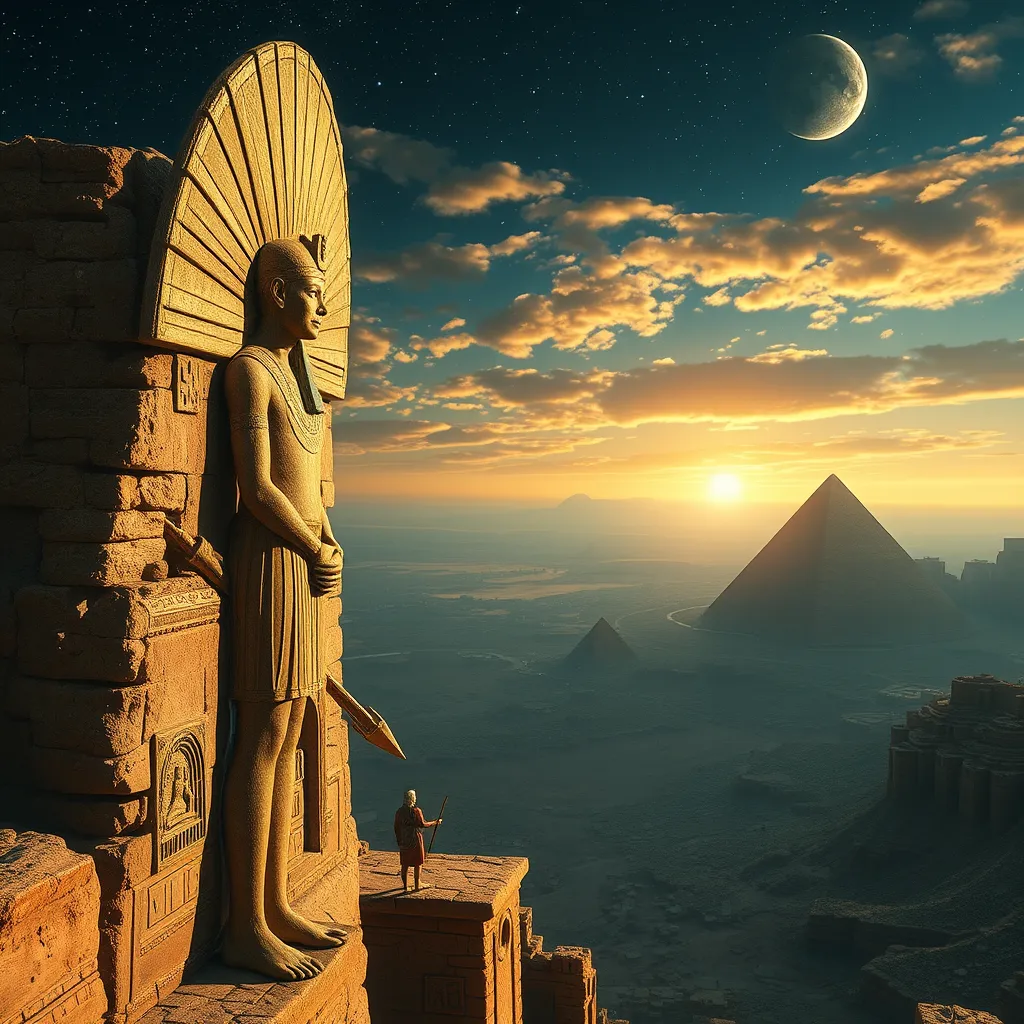The Duat: A Realm of Spiritual Journeys
I. Introduction to the Duat
The Duat, often referred to as the underworld or the realm of the dead in ancient Egyptian mythology, plays a critical role in the belief systems of ancient Egyptians. It is a complex and multifaceted space that serves as both a journey and a destination for the souls of the deceased.
In essence, the Duat represents the afterlife, a place where the soul undergoes transformation and judgment. This realm is not simply a destination but a necessary passage for the soul, embodying the ancient Egyptians’ profound understanding of life, death, and rebirth.
II. The Structure of the Duat
The Duat is characterized by a variety of landscapes and environments that reflect the complexities of the afterlife. It is often depicted as a dark, watery expanse filled with various regions that the soul must navigate.
- Landscapes: The Duat features deserts, rivers, mountains, and fields, symbolizing the trials and tribulations faced by the deceased.
- Key Locations: Among the most significant sites in the Duat is the Hall of Judgment, where souls undergo a critical evaluation of their lives.
Within the Hall of Judgment, the heart of the deceased is weighed against the feather of Ma’at, the goddess of truth and justice. This pivotal moment determines whether the soul is worthy of entering the afterlife or is condemned to eternal suffering.
III. The Journey Through the Duat
The journey through the Duat is a perilous and symbolic passage that every soul must undertake. Upon death, the spirit embarks on a voyage that involves navigating through different regions, each presenting unique challenges and obstacles.
- Obstacles: Souls face various trials, including battling hostile deities, overcoming fears, and confronting their past deeds.
- Guidance: Divine beings may assist the deceased, offering protection and guidance as they navigate through the treacherous landscapes.
This journey is not merely physical; it is a profound spiritual experience that reflects the inner struggles of the deceased and their quest for redemption and rebirth.
IV. Deities and Guardians of the Duat
The Duat is inhabited by numerous deities and guardians who play vital roles in the afterlife journey. These divine figures are not only protectors but also judges and guides for the souls traversing this realm.
- Osiris: The god of the afterlife, Osiris presides over the judgment of souls and symbolizes resurrection and eternal life.
- Anubis: The jackal-headed god, Anubis, is the protector of graves and the guide of souls, ensuring they navigate the Duat safely.
These deities embody various aspects of life and death, providing the deceased with the necessary support to achieve a successful passage through the Duat.
V. The Book of the Dead and Other Texts
The significance of the Book of the Dead cannot be overstated in the context of the Duat. This collection of spells, prayers, and incantations was designed to aid the deceased in their journey through the afterlife.
- Guidance: The texts contain instructions on how to navigate the Duat, including prayers to various deities for protection and assistance.
- Other Texts: Additional ancient texts, such as the Pyramid Texts and Coffin Texts, also provide valuable insights into the beliefs surrounding the Duat and spiritual journeys.
These writings reflect the ancient Egyptians’ deep reverence for the afterlife and their desire to ensure a safe passage for their loved ones.
VI. Symbolism and Themes in the Duat
The Duat is rich in symbolism, with numerous elements representing broader themes of life, death, and rebirth. Understanding these symbols provides deeper insights into the ancient Egyptian worldview.
- Key Symbols:
- The Scarab: Symbolizing transformation and regeneration, the scarab beetle represents the cycle of life and rebirth.
- The Sun: The sun’s journey through the Duat at night symbolizes the cycle of death and rebirth, as it is reborn each morning.
The overarching themes of the Duat include rebirth, the transformation of the soul, and the moral judgment of one’s life actions, reflecting the ancient Egyptians’ beliefs about the interconnectedness of life and the afterlife.
VII. Modern Interpretations and Influences
The concepts surrounding the Duat continue to resonate in contemporary spiritual practices and literature. Many modern interpretations draw on ancient Egyptian beliefs, reflecting a renewed interest in the afterlife and spiritual journeys.
- Spiritual Practices: Some contemporary spiritual movements incorporate aspects of the Duat in their rituals, emphasizing transformation and personal growth.
- Literature and Media: The Duat has influenced various works of fiction and academic studies, inspiring themes of death and rebirth in modern storytelling.
This enduring influence highlights the relevance of ancient beliefs in today’s understanding of life, death, and the spiritual journey.
VIII. Conclusion
In summary, the Duat holds great importance in both ancient and modern contexts. It serves as a powerful symbol of the journey the soul undertakes after death, emphasizing themes of transformation, judgment, and rebirth.
Reflecting on the Duat allows us to appreciate the ancient Egyptians’ profound understanding of existence and their legacy, which continues to influence contemporary thought on spirituality and the afterlife. The Duat not only encapsulates the beliefs of a civilization long gone but also invites ongoing exploration of the mysteries of life and what lies beyond.




